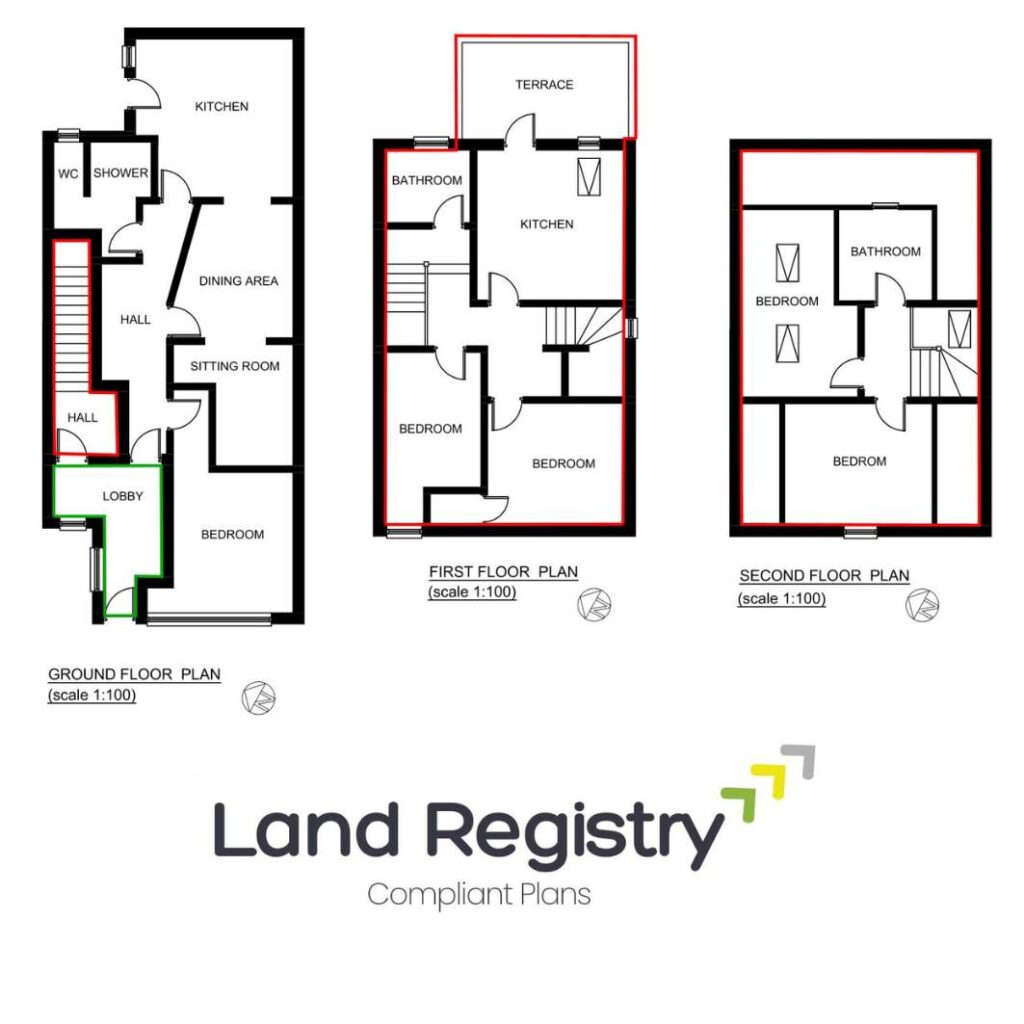The Land Registry Hub: Your Go-To Guide for Property Plans & Conveyancing
🛠️ Navigating the world of Land Registry, lease plans, title plans, and conveyancing can feel like a legal maze—but don’t worry, we’ve got you covered! Whether you’re a property owner, landlord, solicitor, or just someone trying to make sense of UK property rules, this blog is your one-stop resource for clear, practical advice.
From understanding lease plans to avoiding common conveyancing pitfalls, we break it all down in a way that’s easy to follow. Stay tuned for expert insights, tips, and updates to keep you ahead in the property game! 🏡📜✨

Land Registry Compliant Plans
How to Correct Errors in a Land Registry Plan
Mistakes happen. Whether it’s a wrong boundary line, missing access route, or incorrect property details, errors in a Land Registry Title Plan or Lease Plan can cause serious issues. They can lead to boundary disputes, rejected applications, or even legal battles if not corrected properly.
The good news? You can fix them.
If you’ve spotted an error in your Land Registry plan—whether you’re a homeowner, landlord, or property developer—this guide will walk you through how to identify, challenge, and correct it before it causes bigger problems.
Step 1: Identify the Error
Before jumping to corrections, you need to pinpoint exactly what’s wrong. The most common errors in Land Registry plans include:
🚧 Incorrect boundary lines – Your property outline is either too big, too small, or positioned incorrectly.
🛣 Missing rights of way or access routes – If a shared driveway, alleyway, or footpath isn’t marked, it can lead to disputes.
🏠 Incorrect lease area – If you’re leasing part of a property, but the Lease Plan doesn’t match the actual space, it needs fixing.
📍 Mismatched positioning – If the Title Plan doesn’t align correctly with Ordnance Survey maps, it can cause ownership confusion.
💡 Pro tip: Compare your Land Registry plan with your purchase documents, title deeds, or physical property boundaries to spot inconsistencies.
Step 2: Check If the Error Is Legally Significant
Not all errors require correction. The Land Registry operates on a “general boundaries” principle, meaning minor differences between a Title Plan and physical boundaries might not be an issue.
🔍 You should correct the plan if:
✔️ The mistake affects ownership (e.g., land is missing or extra land is included).
✔️ There’s a boundary dispute with a neighbour.
✔️ A lease plan doesn’t reflect the actual rental space.
✔️ A missing right of way or access affects property use.
🚫 You probably don’t need to correct it if:
❌ The discrepancy is very minor (e.g., a few centimetres off the boundary).
❌ The physical boundaries and title deeds confirm ownership, even if the Title Plan is slightly off.
If you’re unsure, speak to a property solicitor or surveyor before taking action.
Step 3: Gather Evidence to Support Your Claim
Before submitting a correction request, you need strong evidence to prove the plan is wrong. This might include:
📜 Title deeds – Older documents showing the correct boundaries.
📸 Photos – Visual proof of the actual land layout.
🗺 Ordnance Survey maps – Comparing the Title Plan with OS maps can highlight errors.
📏 A measured survey – A professional land surveyor can provide accurate property dimensions.
💡 The more evidence you have, the stronger your case!
Step 4: Apply for a Correction with the Land Registry
There are two ways to correct a mistake, depending on the type of error:
Option 1: Request a Title Plan Amendment (Minor Errors)
For simple errors (e.g., misaligned boundaries, missing features), you can submit a request for rectification.
📌 How to do it:
1️⃣ Complete Form AP1 (for standard corrections) or Form DS2 (if it’s a dispute).
2️⃣ Attach your evidence (title deeds, survey reports, etc.).
3️⃣ Submit to HM Land Registry (electronically or via post).
💰 Cost: Usually free for minor corrections, but legal fees may apply if you need a solicitor.
Option 2: Apply for a Boundary Determination (Serious Errors or Disputes)
If the error affects property ownership or leads to a boundary dispute, you’ll need a formal boundary determination.
📌 How to do it:
1️⃣ Hire a chartered surveyor to conduct a boundary survey.
2️⃣ Complete Form DB (Determined Boundary Application).
3️⃣ Pay the application fee (£90 per title) and submit it to the Land Registry.
4️⃣ If your neighbour objects, you may need to resolve the dispute through mediation or the First-tier Tribunal (Property Chamber).
Step 5: Notify Affected Parties (If Required)
If your correction impacts other property owners (e.g., adjusting a shared boundary), you must inform them.
🔔 Who needs to be notified?
- Neighbours if a boundary is moving.
- Tenants if a lease area is changing.
- Mortgage lenders if your property is under a loan agreement.
They may have 30 days to object, so be prepared to provide additional evidence.
Step 6: Wait for Land Registry Approval
Once submitted, the Land Registry will review your request. This can take:
⏳ 2–3 weeks for simple corrections.
⏳ 3–6 months for boundary determinations (or longer if disputes arise).
If your application is approved, your Land Registry records will be updated, and you’ll receive a corrected Title Plan or Lease Plan.
What If the Land Registry Rejects My Request?
If your correction request is denied, don’t panic—you still have options:
📌 Challenge the decision – Provide more evidence and request a reconsideration.
📌 Negotiate with affected parties – If the issue involves neighbours, you may need to resolve it privately.
📌 Go through legal channels – If you can’t reach an agreement, you may need to escalate the issue to the First-tier Tribunal (Property Chamber).
Final Thoughts: Get It Right the First Time!
Errors in Title Plans and Lease Plans can cause serious legal issues, but fixing them is possible if you follow the right steps.
✔️ Double-check all plans before submitting them to the Land Registry.
✔️ Use professional surveyors for accurate boundary measurements.
✔️ Act quickly if you spot an error—delays can lead to bigger problems.
If you’re unsure whether your Land Registry plan needs correction, speak to a property solicitor or land surveyor—getting expert advice can save you time, money, and legal trouble!
💬 Got questions about Land Registry corrections? Drop them in the comments below—we’re happy to help! 📜🏡
Contact Us
Call Us : 01375 267 277
We are open from Monday to Friday
08.30 AM - 17.30 PM
Surv Essex Limited
Building 13 Thames Enterprise Centre
Princess Margaret Road
East Tilbury
RM18 8RH
Our Services
- Lease Plans
- Title Plans
- Conveyancing Plans
- Licencing Plans
- Retail Plans
Quick Links
- Home
- About Us
- Pricing Plan
- Team
- Blog
- Privacy Policy
- Terms & Service

